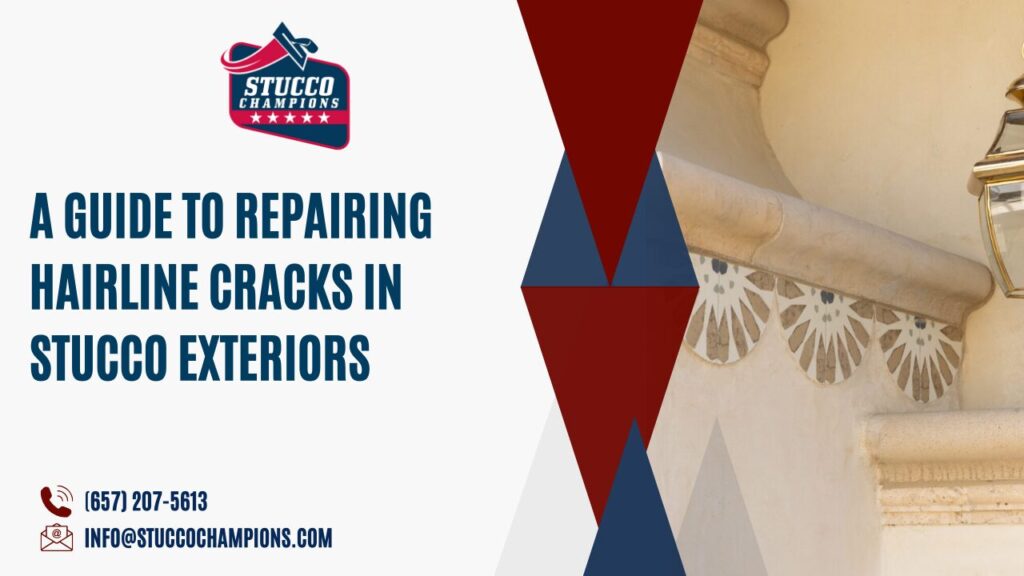Many homes with stucco exteriors face the challenge of cracking. Understanding the types of cracks and their repair methods is crucial for effective maintenance. This guide provides a detailed approach to fixing hairline cracks, typically ranging from 1/16 to 1/8 of an inch wide. While these repairs can often be handled DIY, it’s important to recognize when professional expertise is needed, especially for larger or structural cracks.
Essential Tools and Preparations for Stucco Exteriors
Before you start, gather the following tools:
- A caulking gun (standard or a tube that doesn’t require a gun)
- Caulk (preferably latex with a silicone base, 40-year durability, or sanded caulk for rough textures)
- A bucket of water
- A sponge or rag
Initial Steps and Safety Considerations
- Preparing the Caulk: Cut the caulking tube tip as small as possible, at an angle. This step is vital for control and efficiency in the application process.
- Wetting the Wall: Dampen the wall around the crack. This aids in dust control and facilitates smoother caulking application.
- Applying the Caulk: Use a steady hand to apply a consistent bead of caulk along the crack. The angled tip helps in filling the crack more effectively.
Safety Tips: When working on elevated areas, ensure ladder safety. Always handle caulking guns with care to avoid accidents.
Detailed Repair Process
- Caulk Application: After applying the caulk, use your finger to press it into the crack, covering it entirely. Aim for neatness to reduce clean-up and improve the finished look.
- Cleaning Excess Caulk: Wipe away surplus caulk with a damp sponge or rag, ensuring the caulk remains only in the crack.
- Drying and Second Coat (Optional): Allow the caulk to dry as per the manufacturer’s instructions. A second coat can add texture, making the repair less noticeable. This is optional and depends on your preference for aesthetics versus effort.
- Texture Matching (Optional): If you choose to apply a second coat, practice texturing techniques on cardboard first. This step is crucial for ensuring that the repaired area blends seamlessly with the existing stucco texture.
- Color Application (Optional): For a complete repair, you may need to color match the repaired area with the rest of the wall. Painting is the most common method, but for more accurate matching, consider using a fog coat or a custom acrylic finish.
Understanding Cracks and When to Seek Professional Help
Different types of stucco cracks have various causes, including structural issues, weather impact, and material aging. While minor hairline cracks can be addressed using the steps outlined above, larger or recurring cracks might indicate underlying problems that require professional assessment and repair.
Expertise and Transparency
As someone experienced in stucco repair, I emphasize the importance of understanding your limitations. The DIY approach is suitable for minor, non-structural repairs. For larger, structural issues, consult a professional. This guide aims to provide clear, actionable steps for homeowners while acknowledging the limitations of DIY approaches in certain scenarios.
Safety and Accuracy
Addressing safety concerns, it’s crucial to highlight the potential risks involved in stucco repair, especially when working at heights or with tools like caulking guns. Always prioritize safety and follow best practices to prevent accidents.
In terms of accuracy, this guide draws on established repair techniques, though specific source citations are not provided. For more detailed scientific or technical insights into stucco repair, consulting professional literature or expert sources is recommended.
Conclusion
This comprehensive guide offers homeowners valuable insights into repairing hairline cracks in stucco. While it emphasizes the feasibility of DIY repairs for minor issues, it also highlights the importance of recognizing when professional intervention is necessary. By following these steps, homeowners can effectively address common stucco cracks, ensuring their home exteriors’ longevity and aesthetic appeal.
Last week, we shared Guide to Stucco Textures and Finishes, exploring a variety of styles to help you choose the perfect look for your property. If you’re planning a stucco project, be sure to check out this detailed guide for expert insights!
—

